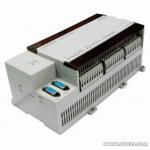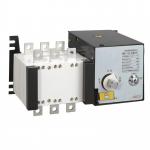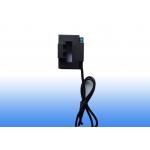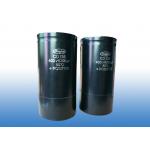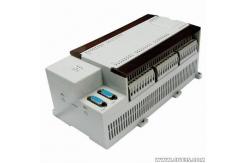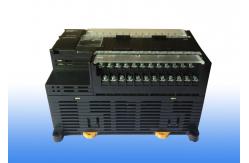High - Performance PLC: Ultra - Fast Processing & Precise
Control for Industrial Automation
PLC (Programmable Logic Controller) is a digital operation electronic system specifically
designed for industrial environment applications. It employs a
programmable memory to store instructions for executing logical
operations, sequential control, timing, counting, arithmetic
operations, etc., and controls various types of machinery or
production processes through digital or analog inputs and outputs.
I. Basic Characteristics of PLC- High Reliability: PLC adopts large-scale integrated circuit technology and rigorous
manufacturing processes, with internal circuits incorporating
advanced anti-interference technologies, ensuring high reliability.
- Simple Programming: PLC uses user-oriented programming languages, such as ladder
diagrams and statement lists, which are intuitive and easy to learn
and master.
- Powerful Functions: PLC possesses multiple functions, including logical operations,
timing, counting, sequential control, PID regulation, and data
communication, capable of meeting various complex industrial
control needs.
- Easy Installation and Maintenance: PLC is compact and lightweight, facilitating easy installation
and wiring. Additionally, PLC features self-diagnostic
capabilities, enabling timely detection and reporting of faults for
convenient maintenance and troubleshooting.
- Flexibility and Expandability: The number of input/output points of PLC can be expanded
according to requirements, and it can be networked with other
devices (such as computers, other PLCs, etc.) through communication
interfaces to achieve data sharing and remote control.
II. Working Principle of PLCThe working process of PLC can generally be divided into three main
stages: input sampling stage, user program execution stage, and output
refresh stage. - Input Sampling Stage: PLC scans and reads all input states and data in sequence,
storing them in corresponding units within the I/O image area.
After the input sampling is completed, it transitions to the user
program execution and output refresh stages.
- User Program Execution Stage: PLC scans the user program (ladder diagram) sequentially from top
to bottom. When scanning each ladder diagram, it first scans the
control circuit composed of various contacts on the left side of
the ladder diagram and performs logical operations on the control
circuit composed of contacts in a left-to-right and top-to-bottom
order. Then, based on the results of the logical operations, it
updates the state of the corresponding bit of the logical coil in
the system RAM storage area, or updates the state of the
corresponding bit of the output coil in the I/O image area, or
determines whether to execute the special function instructions
specified by the ladder diagram.
- Output Refresh Stage: After scanning the user program, PLC enters the output refresh
stage. During this period, the CPU updates all output latch
circuits according to the corresponding states and data in the I/O
image area and then drives the corresponding peripheral devices
through the output circuit. At this point, it is the actual output
of PLC.
III. Application Fields of PLC- Manufacturing Industry: In the manufacturing industry, PLC is used to control various
mechanical equipment on production lines, such as assembly lines,
packaging lines, and conveyor belts, to achieve automated
production.
- Energy Management: PLC can be used to monitor and control energy consumption, such
as electricity, water, and gas, helping enterprises achieve energy
conservation and emission reduction.
- Traffic Control: In traffic systems, PLC is used to control traffic signals,
elevators, escalators, and other equipment to improve traffic
efficiency and safety.
- Building Automation: PLC is used in building automation to control lighting, air
conditioning, ventilation, security, and other systems to achieve
intelligent management.
- Process Control: In industries such as chemicals, petroleum, and pharmaceuticals,
PLC is used to control parameters such as temperature, pressure,
and flow rate during the production process to ensure process
stability and product quality.
|
